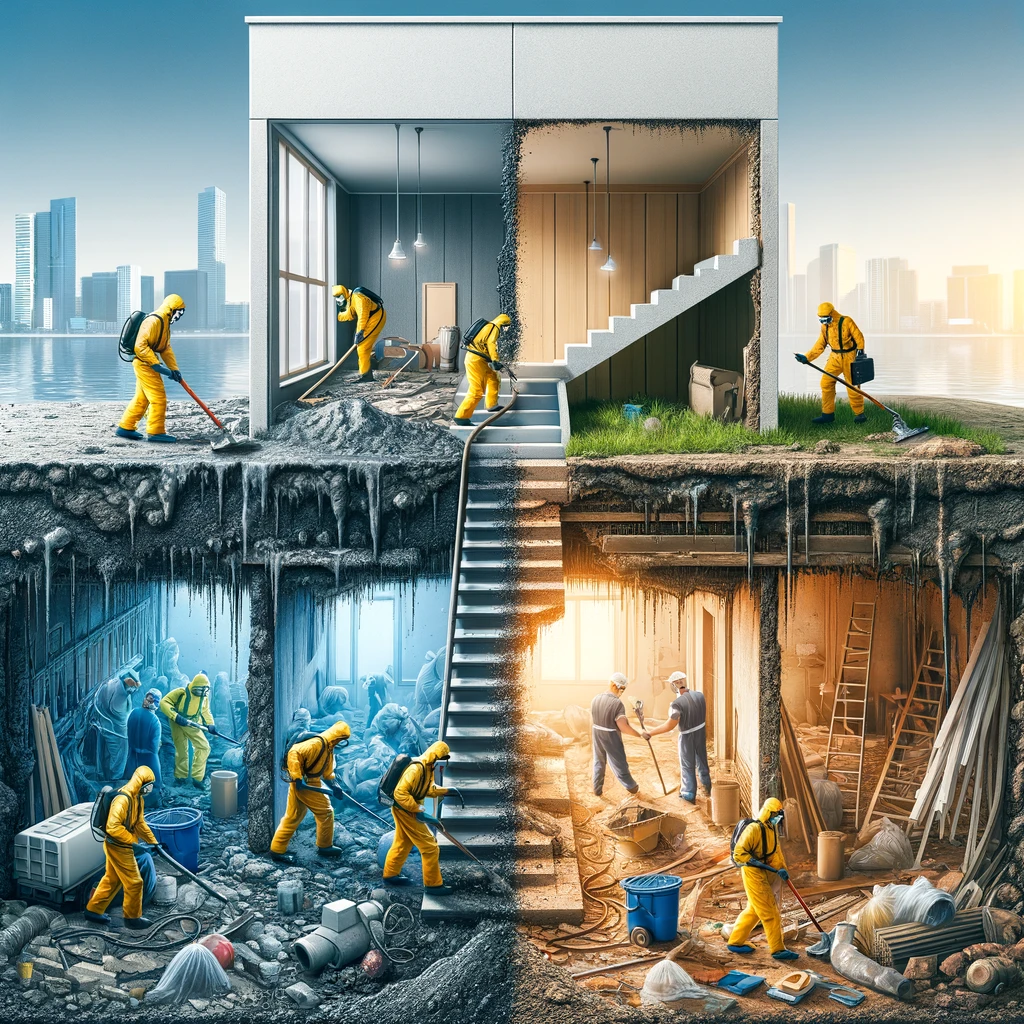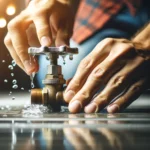When disaster strikes, it’s crucial to know: what is the difference between restoration and remediation? Simply put, restoration focuses on repairing damages to restore your property, while remediation is about solving the issue causing the damage. This article will guide you through each process, what they entail, and when to use them, equipping you with the knowledge to make informed decisions.
Key Takeaways
-
Restoration and remediation are distinct processes; restoration involves returning property to pre-loss condition, while remediation focuses on eliminating the sources of damage and preventing recurrence.
-
Water damage is categorized into three types based on contamination levels (Category 1 ‘Clean Water’, Category 2 ‘Grey Water’, and Category 3 ‘Black Water’), with varied implications for health risks and the approach needed for recovery.
-
Engaging professional services for water damage is essential for safety, effectiveness, and peace of mind, as they provide expertise, advanced equipment, and assistance with insurance claims.
Defining Restoration and Remediation
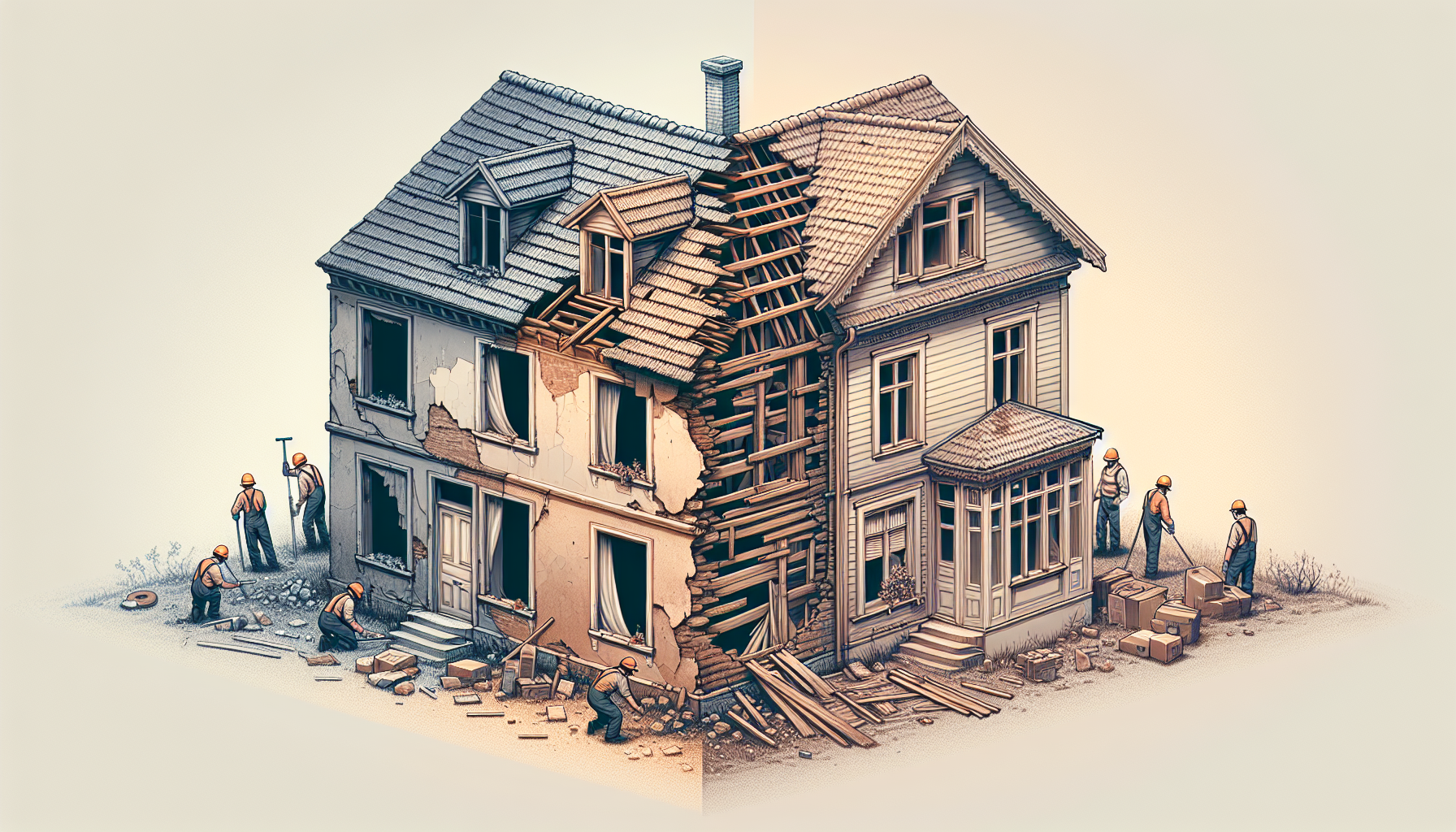
In the face of disaster, recognizing the distinction between remediation and restoration becomes vital. These two distinct processes, often used interchangeably, have distinct meanings and serve different purposes in the recovery process, making it essential to understand the nuances of “remediation and restoration.”
Restoration
Restoration, at its core, is about bringing something back to its original condition. In the context of property damage, it refers to the process of fixing and reconstructing a building or structure that has been damaged by elements such as:
-
water
-
mildew
-
fire
-
smoke
-
mold
-
storms
-
vandalism
-
natural disasters
The primary goal of restoration after water damage is to return a damaged property to its pre-loss condition. This involves procedures such as:
-
Inspection
-
Water extraction
-
Drying
-
Sanitation
-
Reconstruction
Remediation
On the other hand, remediation focuses more on addressing the root cause of the damage. It aims to stop or mitigate further damage, reduce health risks, and prevent the spread of harmful elements by eliminating the sources of damage.
The primary objective of remediation is to eliminate the cause of the damage and prevent it from happening again, which involves locating and stopping the source of water and assessing any potential hazards present in the affected area.
Types of Water Damage and Their Impact
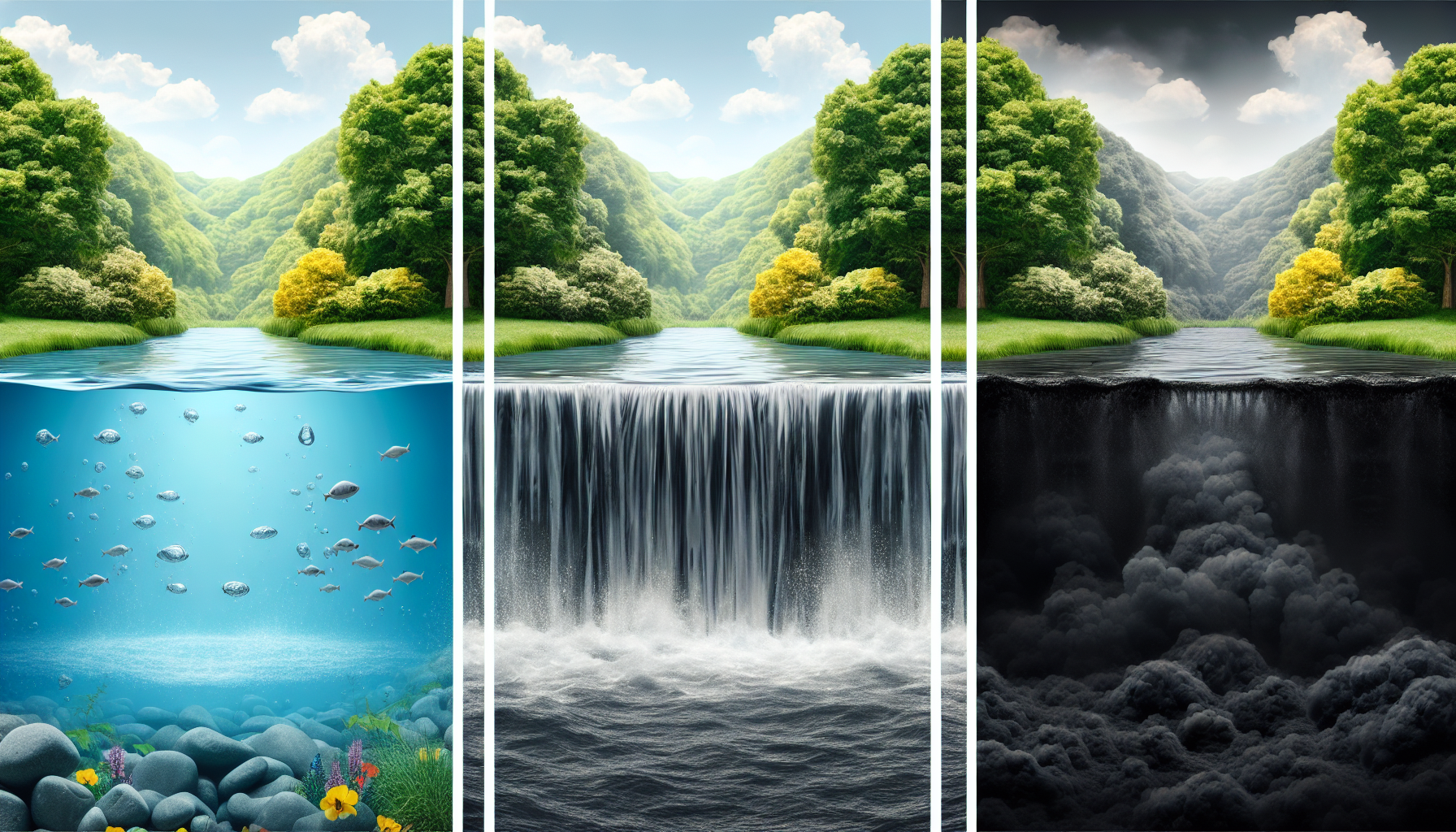
For efficient recovery, it is crucial to comprehend the various types of water damage. Water damage is classified into three main categories based on the IICRC S500 standard: Category 1 (Clean Water), Category 2 (Grey Water), and Category 3 (Black Water), each differing by their contamination level and potential health risk.
Category 1 ‘Clean Water’ originates from sanitary sources and poses minimal health risk, with typical sources including water supply lines, melting ice or snow, rainwater, and toilet tanks. Category 2 ‘Grey Water’ contains significant contaminants with the potential to cause discomfort or sickness upon contact or consumption; examples include overflow from dishwashers or washing machines and toilet bowl overflows with urine but no feces.
The most dangerous of all, Category 3 ‘Black Water’ is grossly contaminated, often containing pathogens and toxic agents. It arises from sources like:
-
sewage
-
waste line backflows
-
seawater
-
rising water from rivers or streams
The Importance of Professional Services
In the context of water damage, the necessity of professional services goes beyond mere convenience. Professionals are critical for addressing the risk of fire and electrical shocks in water damage situations, ensuring the safety and well-being of occupants. They bring expertise to the table, making them essential for dealing with complex water damage restoration and remediation situations.
Professional restoration services provide the following benefits:
-
Efficient work completion
-
Significant reduction in stress for homeowners
-
Peace of mind during recovery
-
Access to the latest equipment and technology, leading to timely and cost-effective repairs
-
Assistance with the insurance claims process, including documentation and potentially securing better settlements
Mold Growth and Remediation
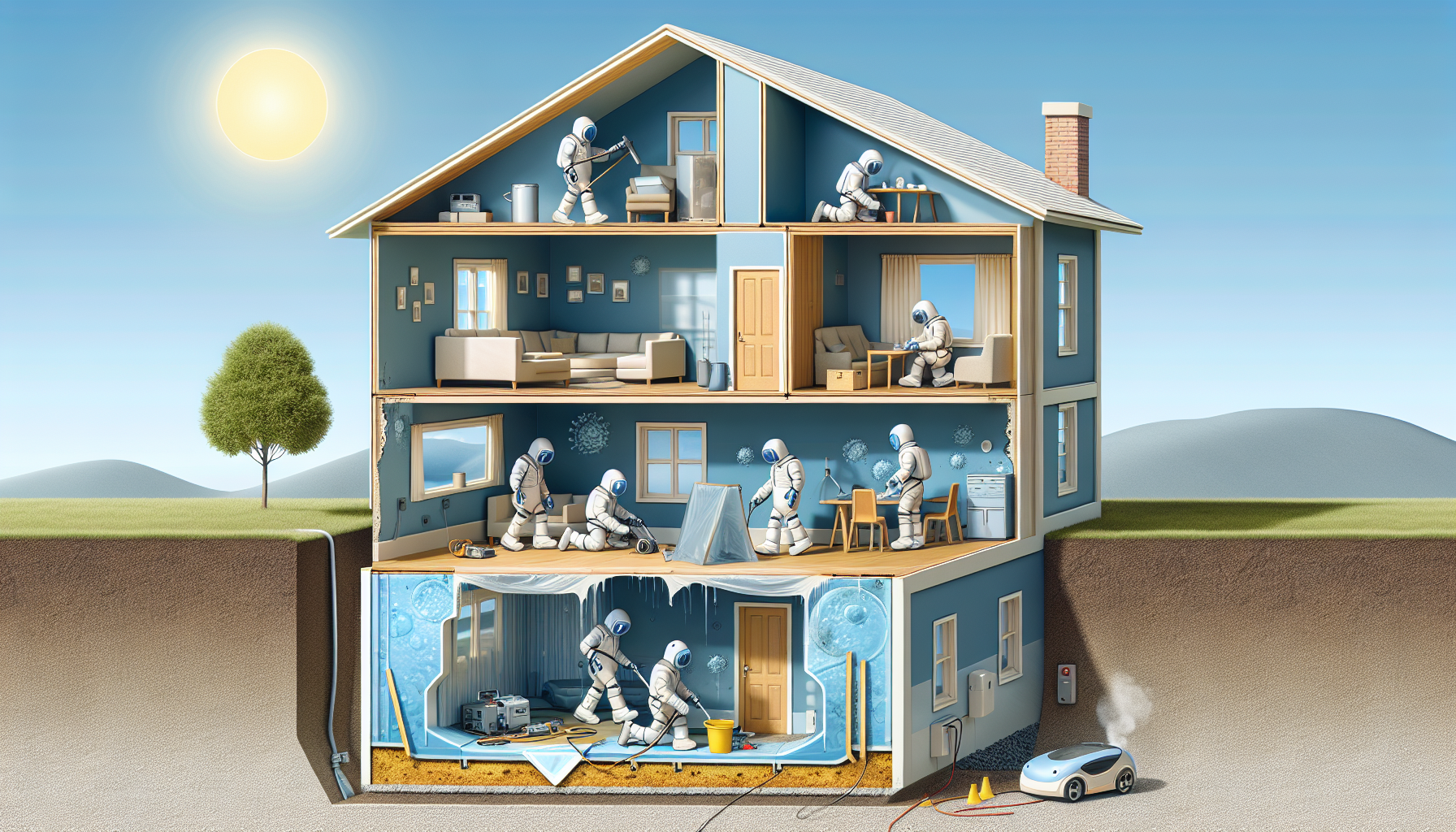
The potential for mold growth represents a significant challenge associated with water damage. It’s not just unsightly; it can have serious health implications. People with mold sensitivities or allergies may experience issues such as stuffy noses, wheezing, and itchy eyes or skin, and exposure can be more severe for those with respiratory conditions or compromised immune systems.
Common indoor molds like Cladosporium, Penicillium, and Aspergillus thrive in environments rich in cellulose and may not always be visible. They can grow behind wallpapers or under fixtures within 48 hours of water exposure.
The process of mold remediation includes:
-
Identifying the moisture source
-
Isolating contaminated areas
-
Removing porous materials
-
Cleaning with biocides
-
HEPA vacuuming
-
Encapsulation
-
Performing post-remediation verification before reconstruction
It’s crucial to treat Category 1 water damage quickly as it can facilitate mold growth, underscoring the importance of professional intervention.
Restoration Process: Techniques and Tools
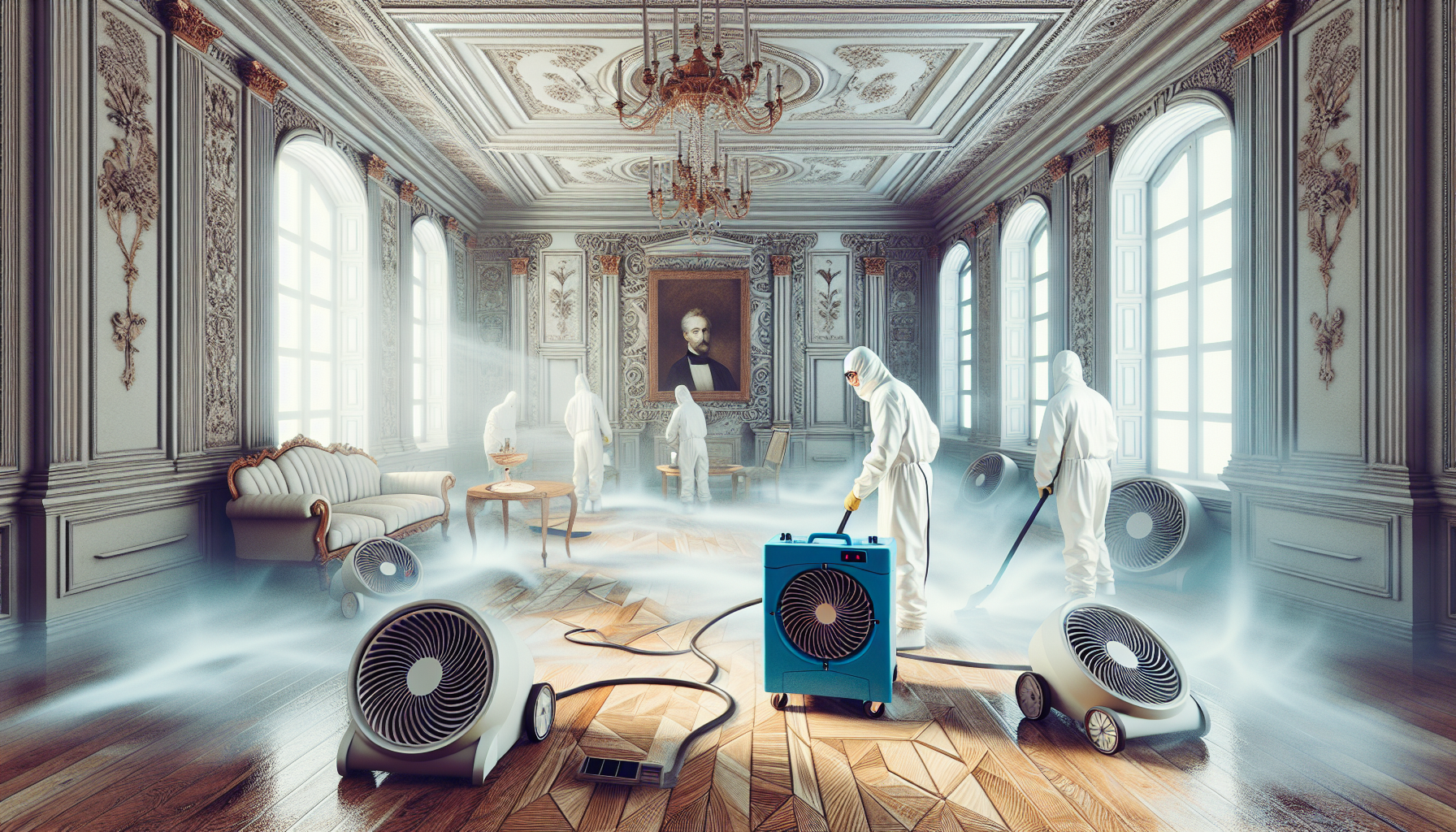
A series of careful steps to reduce moisture content in materials to normal levels characterizes the meticulous undertaking of the restoration process. This is crucial to preventing mold and other water-related damages. Restoration professionals deploy dehumidifiers to lower humidity and air movers to enhance evaporation rates across wet surfaces. The placement of such equipment is crucial for even drying.
It is crucial to keep track of the performance of dehumidifiers and air movers. Adjustments based on environmental readings must be conducted to ensure an optimal drying process, and maintenance like cleaning filters facilitates consistent equipment operation.
Restoration projects can vary and might include pumping out water, tearing out unsalvageable items, and performing necessary repairs. All these are guided by an initial detailed inspection to assess water source, contamination level, and damage extent.
Commercial Property Restoration and Remediation

When it comes to water damage, commercial properties pose a unique set of challenges. These properties can experience extensive areas of water damage that compromise structural integrity and involve complex systems like plumbing, electrical, and HVAC which require careful inspection and repair.
Water damage in commercial buildings commonly leads to operational disruptions, financial losses, and risk exposure, emphasizing the need to protect crucial data and documents. Engaging swiftly with restoration professionals for emergency stabilization, quick water extraction, and, if necessary, employing weatherproofing services to guard against further damage is crucial to minimize these disruptions and financial losses.
Reviewing and enhancing commercial property insurance coverage, including additional protection and business interruption insurance, can help offset losses and provide peace of mind in case of water damage causing business closures.
Preventing Future Damage: Tips for Homeowners and Business Owners
The most effective defense against water damage is prevention. There are several proactive measures that homeowners and business owners can take to protect their properties from standing water. Knowing the location of the stopcock in your property and ensuring all family members know how to shut off the water supply in case of severe leaks can prevent water intrusion and minimize damage.
Maintaining your home’s sump pump and servicing it annually can prevent flooding, especially after heavy rain. Regular inspections of roofs for leaks, ensuring gutters are clear of debris, and sealing any gaps in the building’s exterior are all crucial steps to prevent water intrusion and structural damage.
Remembering the potential health hazards of untreated water damage, such as mold growth and pest infestations, is also vital. Corrosion of pipes can worsen untreated water damage, potentially leading to more extensive damage. Following these preventative measures can help protect your property and your health.
Case Study: A Real-Life Example of Restoration and Remediation
A real-life example can help illustrate the concepts discussed in this blog post. Successful water damage management in a controlled environment involves a remediation process that includes Characterization, Decontamination, and Clearance, ensuring the system is safe to return to service.
Characterization determines the extent and type of contamination, Decontamination encompasses treatment and waste management, and Clearance confirms contaminant reduction to acceptable levels. These distinct processes are executed by companies like Paul Davis Restoration, Kowalski Construction, and SERVPRO in complex restoration projects ranging from addressing mold in a university sports facility to restoring a fire-damaged historic church.
This case study demonstrates the importance of a comprehensive approach to water damage management, combining restoration and remediation techniques to deal with flood, fire, and pipe break damage.
Summary
Understanding the differences between restoration and remediation, the types of water damage, and the importance of professional services are vital when dealing with water damage. From preventing mold growth to the specific techniques and tools used in the restoration process, these insights can help homeowners and business owners navigate the recovery process.
While water damage can be devastating, it’s important to remember that there are professionals trained to handle these situations. With the right help and information, you can restore your property, remediate the cause of the damage, and prevent future issues.
Frequently Asked Questions
What is the meaning of remediation of a house?
Remediation of a house refers to the thorough removal of pollutants or contaminants to ensure ongoing safety, such as in the case of mold growth. This process is distinct from restoration and aims to provide lasting results.
What comes after remediation?
After completing phase 1 remediation and passing post-remediation verification, the next step is to begin phase 2, which includes two types of cleaning based on the contamination level.
What is the difference between restoration and remediation?
The main difference between restoration and remediation is that restoration focuses on returning a damaged property to its original condition, while remediation aims to eliminate the cause of the damage and prevent future issues. Therefore, restoration is about repairing the damage, while remediation is about addressing the root cause to prevent further damage.
What are the types of water damage?
Water damage is classified into three categories: Category 1 (Clean Water), Category 2 (Grey Water), and Category 3 (Black Water), each with different contamination levels and health risks. It’s important to be aware of these categories when dealing with water damage.
Why are professional services important in handling water damage?
Professional services are important in handling water damage because they bring expertise, efficiency, and access to the latest equipment and technology, ensuring safety and easing the insurance claims process.
[/et_pb_text][/et_pb_column][/et_pb_row][/et_pb_section]
